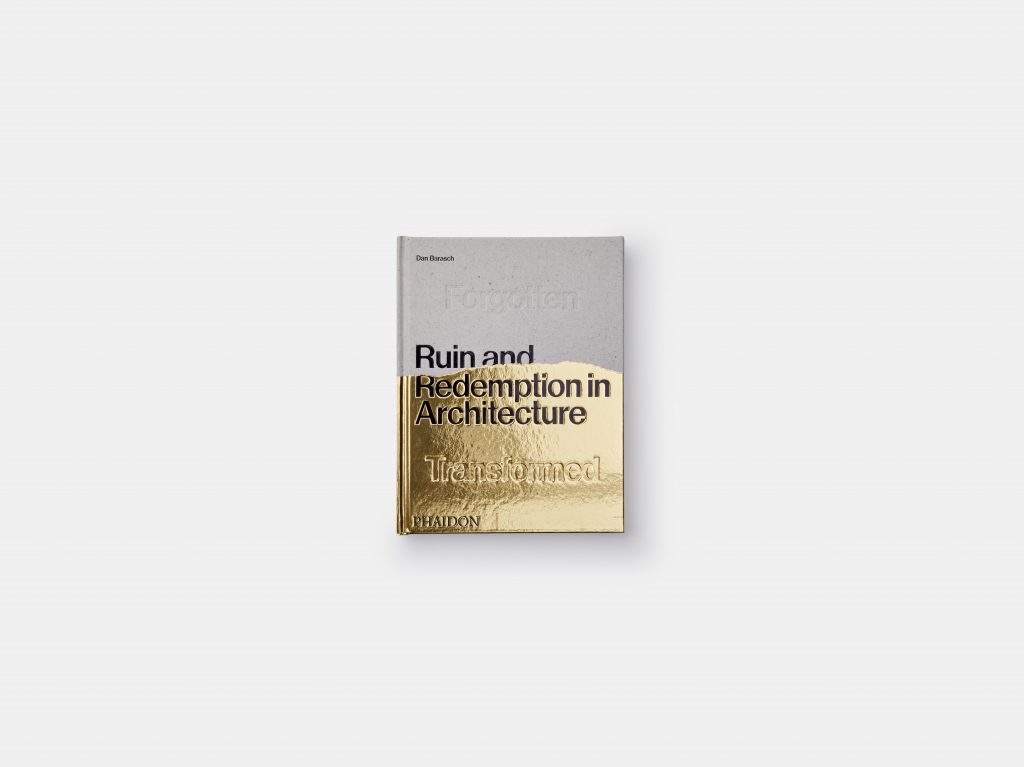Interview: Dan Barasch on Ruin and Redemption in Architecture
An extensive survey of buildings lost, forgotten, reimagined and transformed

Dan Barasch, co-founder of New York City‘s Lowline (a football field-sized abandoned plot of underground land in the Lower East Side) argues in his newest book, Ruin and Redemption in Architecture, that there are four status updates for old buildings: lost, forgotten, reimagined and transformed. Barasch documents buildings all over the world in these various states in the book—through photographs, essays and more.
Whether it be Sanzhi UFO Houses in New Taipei City (which were built in 1978, and demolished in 2010) or a cement factory in Sant Just Desvern, Spain (completed in 1921, abandoned in 1968 and transformed in 1975), Ruin and Redemption is a sprawling source of inspiration that doubles as documentation of our planet’s ever-changing architectural landscape.

“I’ve long been inspired by abandoned spaces, and curious about their role in our collective imagination. What is it about abandoned spaces that are so magical for visitors, and what is it about them that inspire people to reclaim, preserve, and transform them?” Barasch tells us.

“Online and on Instagram, there is no shortage of what we call ‘ruin porn’—beautiful images of abandoned spaces without any real context or background. And we also see a considerable degree of ‘design porn’—stunning images of incredible adaptive reuse design, mostly celebrating the genius of the architects and designers behind these interventions,” he says. “I’m more interested in diving a bit deeper, understanding the real history behind these abandoned spaces, and understanding how a ruin can be preserved and transformed into something altogether new. And I’m interested in the people behind these efforts, which are never easy—going well beyond the developers and architects that tend to get most of the credit.”

Knowing what projects like these entail then enables Barasch to take a closer look into logistical scopes, realistic goals for certain types of structures and much more. While there’s a balance between what’s old and left behind and what’s old and renewed, it’s oftentimes difficult to determine what should remain untouched, and what would benefit from refurbishment.

“I do think a central thesis in the book centers on the inherent value of older and historic structures, and that once we destroy or neglect these historic sites, we will never be able to reclaim or redesign the original charm,” he says. “We have a responsibility to protect and assign value to vulnerable older buildings: they are clues to our shared history, and they fascinate us today and for generations to come.”

It’s oftentimes crucial to bring a decrepit building back from the brink, yet sometimes its history or allure can be erased along the way. “So much of the value of an abandoned space lies with its mysterious, ghostly, apocalyptic, and even melancholy feeling of decay,” Barasch says. “And yet I do hope that the Maunsell Sea Forts in the UK are preserved and remain treasured, in some form or another. I do hope forgotten sites are at least saved from demolition. The question of whether or not true ‘redemption’ is a clear outcome of a design transformation is ultimately a subjective, contextual, and debatable issue.”
Barasch has addressed this balance in a number of his talks on social innovation, urban development and public design—and of course in his efforts to bring the Lowline to life.

“A few cases have been projects I have been studying closely, and about which I am very familiar, like the effort to reclaim the LA River, or build a park over the 11th Street Bridge in Washington DC, or of course my own project, the Lowline in New York City,” he says. “But other examples were simply projects that I have visited or have learned about over the years. In assembling the list, I worked with a group of excellent researchers and design experts to come up with hundreds of potential projects for inclusion, and ultimately we winnowed these down to those that served as the strongest metaphors for larger design trends or infrastructure concepts. There are of course many, many more projects we could have happily included, but unfortunately, a book can only be so large.”
That leaves plenty of lost, forgotten, reimagined and transformed buildings to be found and admired, no matter their destined state.
Ruin and Redemption in Architecture is available for pre-order now.
Images courtesy of Phaidon












